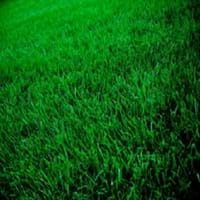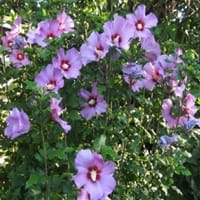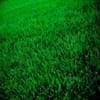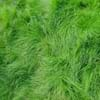Life Span
Perennial
Perennial
Types
Bigleaf hydrangea, Hortensia, Smooth hydrangea, Oakleaf hydrangea, Annabelle
Not available
Number of Varieties
Not Available
Habitat
Forest edges, Hillside, Woods
subtropical regions, Temperate Regions, Tropical regions, Warmer regions
USDA Hardiness Zone
7-10
9-11
AHS Heat Zone
10 - 7
12-1
Sunset Zone
7, 9, 10
H1, H2, 13, 14, 15, 16, 17, 20, 21, 22, 23, 24
Habit
Spreading
Upright/Erect
Flower Color
Blue, Dark Purple, Light Purple, Red, White
Blue, Purple, Blue Violet
Flower Color Modifier
Bicolor
Not Available
Fruit Color
Not Available
Not Available
Leaf Color in Spring
Light Green, Yellow green
Dark Green
Leaf Color in Summer
Light Green
Dark Green
Leaf Color in Fall
Light Green, Yellow green
Dark Green
Leaf Color in Winter
Light Green, Lemon yellow, Tan
Dark Green
Leaf Shape
Oblovate
Irregular
Plant Season
Spring, Summer, Fall, Winter
Spring, Summer, Fall, Winter
Sunlight
Full Sun
Full Sun
Growth Rate
Medium
Medium
Type of Soil
Loam, Sand
Clay, Loam, Sand
The pH of Soil
Acidic, Neutral
Acidic, Neutral, Alkaline
Soil Drainage
Well drained
Well drained
Bloom Time
Indeterminate
Indeterminate
Tolerances
Cold climate, Drought
Not Available
Where to Plant?
Ground
Ground, Pot
How to Plant?
Seedlings
Seedlings, Semi-hardwood cuttings
Plant Maintenance
Medium
Medium
Watering Requirements
Average Water Needs, Over-head watering, Requires watering in the growing season
Average Water Needs, Do Not over Water, Requires regular watering
In Summer
Lots of watering
Lots of watering
In Spring
Moderate
Moderate
In Winter
Average Water
Average Water
Soil pH
Acidic, Neutral
Acidic, Neutral, Alkaline
Soil Type
Loam, Sand
Clay, Loam, Sand
Soil Drainage Capacity
Well drained
Well drained
Sun Exposure
Full Sun
Full Sun
Pruning
Prune to control growth, Remove dead leaves
Remove damaged leaves, Remove dead branches, Remove dead leaves
Fertilizers
All-Purpose Liquid Fertilizer, Nitrogen, Phosphorous
All-Purpose Liquid Fertilizer
Pests and Diseases
Red blotch
Red blotch, Rust aphids
Plant Tolerance
Drought
Not Available
Flowers
Insignificant
Yes
Flower Petal Number
Single
Single
Foliage Texture
Medium
Medium
Foliage Sheen
Glossy
Matte
Attracts
Bees, Flies
Butterflies, Flying insects, Hummingbirds, Insects
Allergy
Chest tightness, Diarrhea, Dizziness, Nausea, Vomiting
Not Available
Aesthetic Uses
Beautification, Ground Cover, Landscape Designing, Showy Purposes
Borders, Showy Purposes, small hedge
Beauty Benefits
No Beauty Benefits
Not Available
Environmental Uses
Air purification, Food for insects, Prevent Soil Erosion
Air purification
Medicinal Uses
Fever, Kidney problems, Urinary tract problems
High blood pressure, lowering blood pressure
Part of Plant Used
Flowers, Root
Flowers, Leaves
Other Uses
Decoration Purposes, Showy Purposes
Decoration Purposes
Used As Indoor Plant
No
Yes
Used As Outdoor Plant
Yes
Yes
Garden Design
Lawns and Turf
Container, Feature Plant, Hedges, Mixed Border, Rock Garden, Wall
Botanical Name
EREMOCHLOA ophiuroides
ALYOGYNE huegelii 'Monle'
Common Name
Centipede Grass
Blue Hibiscus, Purple Delight Blue Hibiscus
In Hindi
Hydrangea
Blue Hibiscus
In German
Hortensie
Blauer Hibiskus Baum
In French
Hortensia
Bleu Hibiscus Arbre
In Spanish
Hortensia
Azul árbol del hibisco
In Greek
υδραγεία
Μπλε Hibiscus Tree
In Portuguese
Hortênsia
Árvore azul do hibiscus
In Polish
Hortensja
Niebieski Hibiscus Drzewo
In Latin
Hibiscus
Hibiscus lignum blue
Phylum
Embryophyta
Magnoliophyta
Class
Liliopsida
Magnoliopsida
Order
GLUMIFLORAE
Malvales
Genus
Ophiuroides
Alyogyne
Clade
Angiosperms, Monocots
Angiosperms, Eudicots, Rosids
Tribe
Andropogoneae
Hibisceae
Subfamily
Sorghum
Malvoideae
Number of Species
Not Available
Properties of Centipede Grass and Blue Hibiscus
Wondering what are the properties of Centipede Grass and Blue Hibiscus? We provide you with everything About Centipede Grass and Blue Hibiscus. Centipede Grass doesn't have thorns and Blue Hibiscus doesn't have thorns. Also Centipede Grass does not have fragrant flowers. Centipede Grass has allergic reactions like Chest tightness, Diarrhea, Dizziness, Nausea and Vomiting and Blue Hibiscus has allergic reactions like Chest tightness, Diarrhea, Dizziness, Nausea and Vomiting. Compare all the properties and characteristics of these two plants. Find out which of these plant can be used as indoor plant. If you are interested to decorate your house and garden, find out aesthetic uses, compare them and select the plant which will beautify your surrounding. Along with beautification, try comparing medicinal and edible uses of Centipede Grass and Blue Hibiscus and you can choose the plant having best and most benefits.
Season and Care of Centipede Grass and Blue Hibiscus
Season and care of Centipede Grass and Blue Hibiscus is important to know. While considering everything about Centipede Grass and Blue Hibiscus Care, growing season is an essential factor. Centipede Grass season is Spring, Summer, Fall and Winter and Blue Hibiscus season is Spring, Summer, Fall and Winter. The type of soil for Centipede Grass is Loam, Sand and for Blue Hibiscus is Clay, Loam, Sand while the PH of soil for Centipede Grass is Acidic, Neutral and for Blue Hibiscus is Acidic, Neutral, Alkaline.
Centipede Grass and Blue Hibiscus Physical Information
Centipede Grass and Blue Hibiscus physical information is very important for comparison. Centipede Grass height is 2.50 cm and width 3.00 cm whereas Blue Hibiscus height is 120.00 cm and width 120.00 cm. The color specification of Centipede Grass and Blue Hibiscus are as follows:
Centipede Grass flower color: Blue, Dark Purple, Light Purple, Red and White
Centipede Grass leaf color: Light Green and Yellow green
Blue Hibiscus flower color: Blue, Purple and Blue Violet
- Blue Hibiscus leaf color: Dark Green
Care of Centipede Grass and Blue Hibiscus
Care of Centipede Grass and Blue Hibiscus include pruning, fertilizers, watering etc. Centipede Grass pruning is done Prune to control growth and Remove dead leaves and Blue Hibiscus pruning is done Remove damaged leaves, Remove dead branches and Remove dead leaves. In summer Centipede Grass needs Lots of watering and in winter, it needs Average Water. Whereas, in summer Blue Hibiscus needs Lots of watering and in winter, it needs Average Water.





